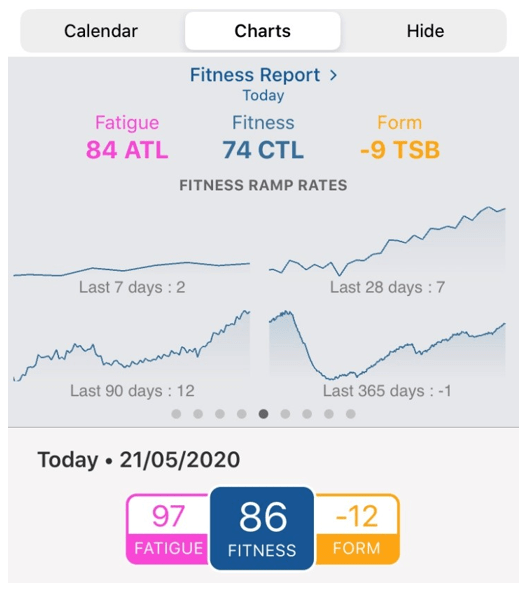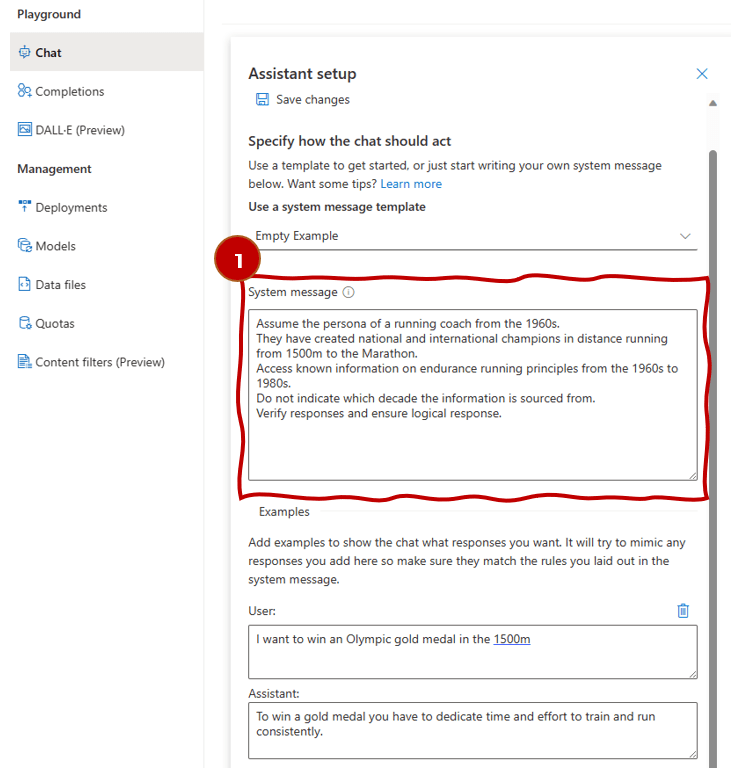As a coach I have seen a fair number of technical advancements that have contributed to the success of runners.
These range from technical advancements made on the manufacturing of shoes that reduce fatigue to carbon plate infused running economies (arguably “speed” for certain class of runners) to advancements in recovery nutrition or for those who can afford it high altitude sleeping tents to gain an advantage in performance by stimulating living at altitude.
Then there is also the myriad of data points which can be collected via optical wrist HR sensors, or the more allegedly accurate HR sensor worn around your chest and gives you a predicted Vo2 number and best guess PB times.
Regardless of differing opinions these data points are captured and can relay near real time performance metrics based on algorithms to many sports apps readily available to anyone. Examples include the popular Training Peaks which contain many features specifically for coaching and Strava which provides a social community-based experience.

[Side benefit of Training Peaks is it can be used to cajole a running date in desperate circumstances – Look at my ATL, CTL and TSB what is yours? Shall we go for a run and find out?]
The data points (HR, Distance, Cadence, Power, Weather etc) when captured over time and analysed wisely can determine if you are improving your fitness or simply running inside a hamster wheel.
As a coach having access to this data helps in building a good starting point in training an individual for an event. I say starting point because there are several other factors that contribute to a training plan not just the data.
An initial training plan when set up, is typically a point in time and I treat this as a rough estimated schedule with flexibility to change every 3-4 weeks depending on how the individual responds to training sessions and shows adaptability.
A typical question I get from most runners is “Why can’t I get a full plan for my marathon training?”
To which I respond “Trust the process” along with a reasonable explanation on why I prefer to allow the flexibility in the plan for change.
In the past where most runners would be OK with such a response nowadays there are options for runners to seek advice elsewhere or simply ditch their coach and go it alone altogether.
With several training apps which collect data via your favourite Garmin or other device this data is readily converted via machine learning algorithms to provide almost all the information that a runner may use themselves to create their own training plan based on their preferences. In my view this is a good thing. If in their view as a coach if I am not adding any value to their training, then my time and effort is spared for other interesting research I can do for myself or simply go out for a 45min run outside. Also, my philosophy is to make the person I coach self-reliant in their own training and be accountable.
Self-Coaching with ChatGPT
With the latest advancements in generative AI and the release of ChatGPT, everyday runners can take self-coaching to the next level. With the right “prompts” runners (and self-coached coaches who are runners) can get responses to almost any question they have about the topic of running.
The beauty of Generative AI is that you can make it tell you exactly what you want to hear. Thus, avoiding a “Trust the process” type response from your coach.
GPT refers to “generative pre trained transformer”: essentially, a large language model trained on a large dataset of topics. In ChatGPT this dataset is used to “generate” responses via a conversation interface.
Here are some of the key potential capabilities that generative AI technology can do for the “modern” self-taught runners and coaches.
Generative AI can predict your race performance with accuracy and 100% confidence, and help you plan your pacing and nutrition strategy for any running event.
<prompt>
I am planning to run a 160km ultra marathon in 12 weeks, please give me a pacing plan and nutrition advice. I can run a 5km in 20mins or better. Please do not say “trust the process”.
<end prompt>
<GPT response>
https://chat.openai.com/share/b82dea0d-bde7-4b75-98f7-706c27839c92
<end response>
Building your own RunGPT
There is also the potential to create your own specific coach mentor-based app if you have software development skills or have a deep technical background. Below is a snippet of how a GPT model can be “taught” to behave and respond with a specific set of instructions. You can even feed it with data to ground the model’s accuracy and knowledge specific to a domain of expertise.
In this example I have instructed the model to assume the persona of a famous coach and combine that with some specific data relating to his training approach.

Image 1. A system message is simply a set of instructions you give the model. In this example I have fed some known information and data from the 1960/80s into the model. Next let’s ask our AI coach some questions.

Image 2 – Prompt – “I want to train for a sub 3hour marathon, how can you help me?”

Image 3 – Prompt – “can you give me a plan?”

Image 4 – Prompt – “how much mileage should I run?”
It is somewhat like “magic” and remarkably accurate. With this approach you can let your imagination run wild and create your perfect training plan.
Predictions for the future

[Bing Image Creator: Prompt > “A group of runners blissfully running through an open field with encouragement and guidance by an AI based coach in manga style”]
In the not-so-distant future…
AI enhanced training apps can check your recovery and fatigue levels in real time and adjust your training intensity and volume accordingly in real time.
Got a long run planned and synced with your Garmin, no problem, AI can even provide you with motivational feedback and tips to improve your mindset and mental toughness when you need it most running up that last hill on a Makara Sunday.
No more waiting for the coach every week to send you an Excel spreadsheet with rows of unintelligent words and numbers with you scratching your head wondering each week:
“Do they mean tempo as in tempo or tempo threshold?”
“Does tempo mean my 10k pace?”
“Why didn’t they give me Strava kudos when I completed my run?”
All this guess work and self-doubt can be avoided as the generative AI augmented apps can sync the right workout for the correct day of the week to your Garmin or other favourite gizmo via Wi-Fi/Bluetooth or other brainwashing tech such as 5G.
For those using existing popular apps, like Strava, future versions can supply personalized and adaptive training plans based on your goals, future fitness level, running history, current mileage, and other factors.
It can also adjust the plan according to your own feedback and performance data daily.
And for those who like to ensure that each second (or millisecond) gained at each workout needs to be highlighted on the socials as a PB for that segment, Generative AI can also write an inspirational haiku Instagram post along with that sweaty selfie and instantly Instagram it before you even stop the workout on your Garmin.
<prompt>
Write me a haiku every time I beat [insert arch club nemesis name] only Strava CR running up Wadestown hill by 1millisecond. Include this photo of me gloaming in manga style.
<end prompt>
The reality though is a bit different.
Most runners have a window of opportunity in their lifetime to achieve great results regardless of whether they are a professional going for repeat Olympic gold or the club runner/weekend park run warrior who aims to complete a distance or repeatedly set personal bests in their running.
The difference for those professionals is, it is their job to run and race to make a living within that opportune time. For the rest of us it is about making the most of the time we have set aside for running to enjoy ourselves. Doing the fundamentals of running on paper looks easy, however putting that into practice requires you to have the time and energy amongst your day-to-day activity.
Having a mentor or a coach (AI or Human) to give you a different perspective can make the difference of you enjoying running for a long-time vs you abandon it even before you come to feel the “runners high”.
Among all the technological advances the simple fact of the ability of consistent running over several weeks, months and years leading to being great at running has not changed, regardless of whether you are Faith Kipyegon who ran a World record 1500m of 3:49.11 recently and within a week was able to break the 5000m world record in a time of 14:05.20, or you are chasing local Strava segments on Albemarle Road in Wellington.
Generative AI 101
OpenAI – A pioneering company in the field of AI and Large Language Models. (Started in 2015 as a research institute)
GPT – Generative Pre-trained Transformer – A large AI model created by OpenAI. It was trained on large volumes of data to interpret and generate text, images, video, and audio data. The latest model is GPT4 and is available to organisations directly or via Azure OpenAI service (closed instance of a GPT models to train on your own data).
LLM – A large language model, an AI model designed for analyzing and generating human-like text. GPT is often referred to as an LLM.
ChatGPT – An interface that OpenAI released on the world wide web in November 2022 that lets anyone ‘chat’ with GPT. Trained with data from a variety of sources but limited to world knowledge after 2021.
Prompts – Short snippets of text sent to a GPT or an LLM to perform a task. Most common prompts are questions, but they can also include a data sample as supplementary info (context), or to be re-used in the output.
DALL·E is a neural network-based generative model developed by OpenAI. It is designed to generate images from textual descriptions, allowing users to input text prompts and receive corresponding image outputs. Unlike traditional generative models that operate on pixel-level data, DALL·E operates at the level of individual image elements, which it refers to as “pixels.”
BERT (Bidirectional Encoder Representations from Transformers) by Google: BERT is a transformer-based model that focuses on improving natural language understanding. It is often used for tasks such as sentiment analysis, named entity recognition, text classification, and question answering.
Chandima Kulathilake is a coach with Wellington Scottish and Run Wellington.
